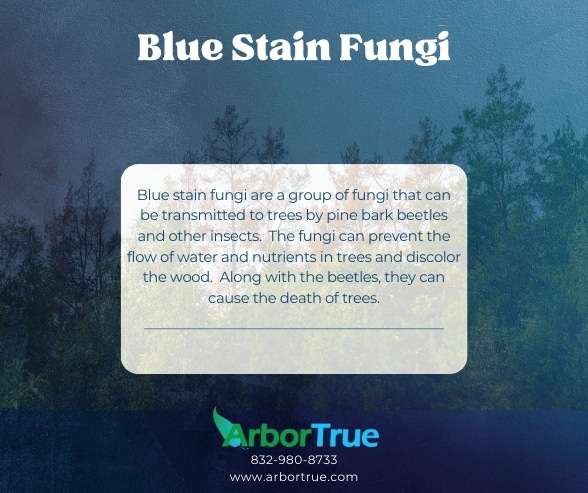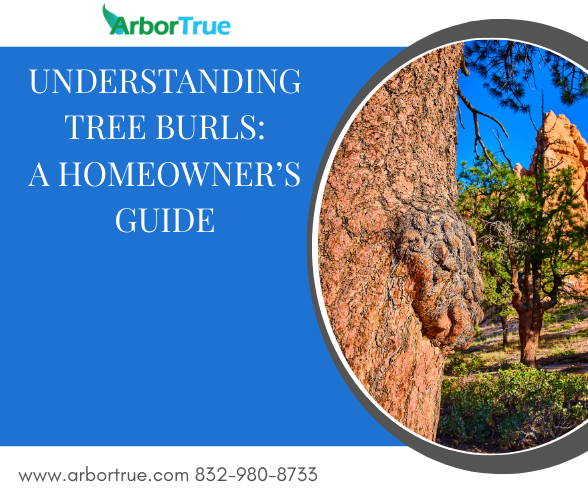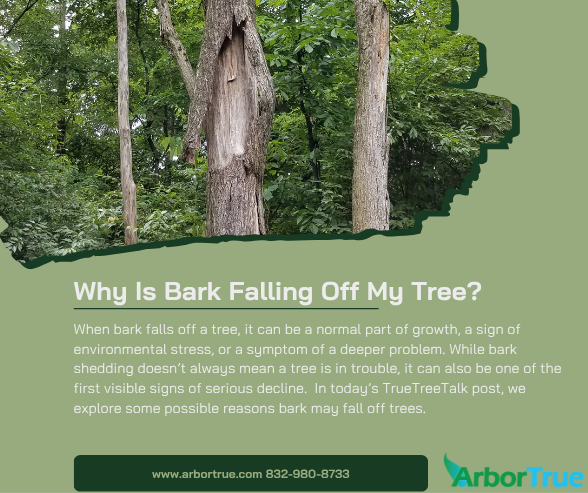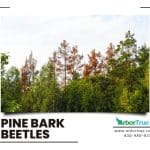
Pine Bark Beetles
April 17, 2024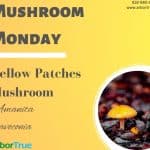
Mushroom Monday: Yellow Patches Mushroom
April 22, 2024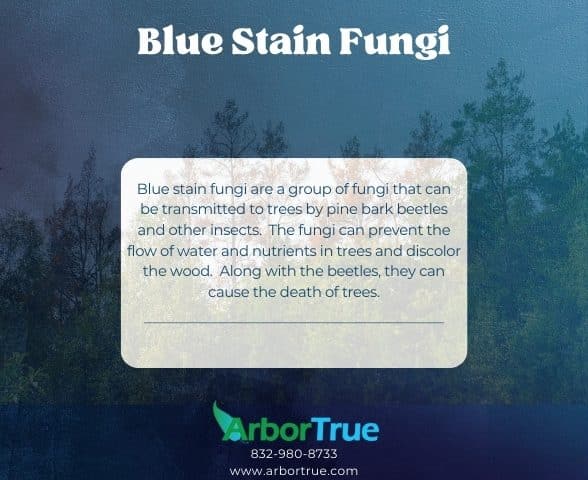
Blue Stain Fungi
In our recent post about pine bark beetles, we mentioned blue stain fungus. In this post, learn more about the fungi and how they impact trees.
What are Blue Stain Fungi?
Blue stain fungi are a group of fungi that come from different genera including Ophiostoma, Ceratocystis, Grosmannia, and Ceratocystiopsis. In these genera, there are a number of species that are part of this group.
What Relationship do Blue Stain Fungi Have With Pine Bark Beetles?
Blue stain fungi and pine bark beetles have a symbiotic relationship. The beetles carry the fungi and the fungi reduces resin production in trees. Resin can kill the beetles. In addition, the fungi helps the beetle by serving as a food source for them and their larvae and by making the tree a better environment for them. Although the fungi and the beetles might have a positive relationship with each other, their combination can be detrimental to trees.
How do Blue Stain Fungi Grow in Trees?
Blue stain fungi spores are carried by beetles (as well as other insects) into host trees. The spores germinate in the tunnels formed by the beetles, and form mycelium. This spreads from the outside of the tree, inward. The fungi get nutrients and energy from the sapwood and bark of trees.
How do Blue Stain Fungi Harm Trees?
Blue stain fungi harm trees by blocking the flow of water and nutrients in trees with their mycelium. Trees can die more quickly if they have pine bark beetles and blue stain fungi.
What Causes the Blue Stain of Blue Stain Fungi?
Blue stain fungi causes the sapwood of trees to turn a blue/green color. The fungi produce color in the walls of their hyphal cells. This color comes from melanins. The melanins protect them from drought, light, and from things the tree produces that could kill them. The color spreads with the fungi from the outside of the tree inward.
Although the fungi can hasten the death of trees infected by pine bark beetles, and they discolor the wood, discolored wood doesn’t have less strength than wood that isn’t discolored. The reason for this is that blue stain fungi don’t consume lignin or cellulose in wood like some other fungi do. This means that the strength of the wood isn’t reduced.
Are There Similar Staining Fungi?
There are fungi similar to blue stain fungi that also stain wood (although different colors). Some are carried by wind and some are spread from the roots of one tree to another. Blue stain fungi are carried by insects.
If you found this information about Blue Stain Fungi helpful, check out our other posts on our TrueTreeTalk blog. Follow us on Facebook to keep up with these and other posts. Check out our list of blog posts grouped by topic for more to read. Also, follow us on LinkedIn for industry-related posts.
* * *
ArborTrue is a science-based tree service company in the greater Houston area. We also serve Austin and other parts of Central Texas. We provide a range of services including tree trimming, tree pruning, tree removal, tree planting, arborist consultations, and more. Call us today at 832-980-8733 (Houston) or at 512-546-3833 (Austin) or reach out to us online to schedule an appointment.
ArborTrue has a dedicated landscaping division, now serving select areas in the greater Houston region—with more locations coming soon. We specialize in organic practices, soil biology, and ecological health to help your entire landscape truly thrive. To learn more or schedule a consultation, contact us at landscape@arbortrue.com.

